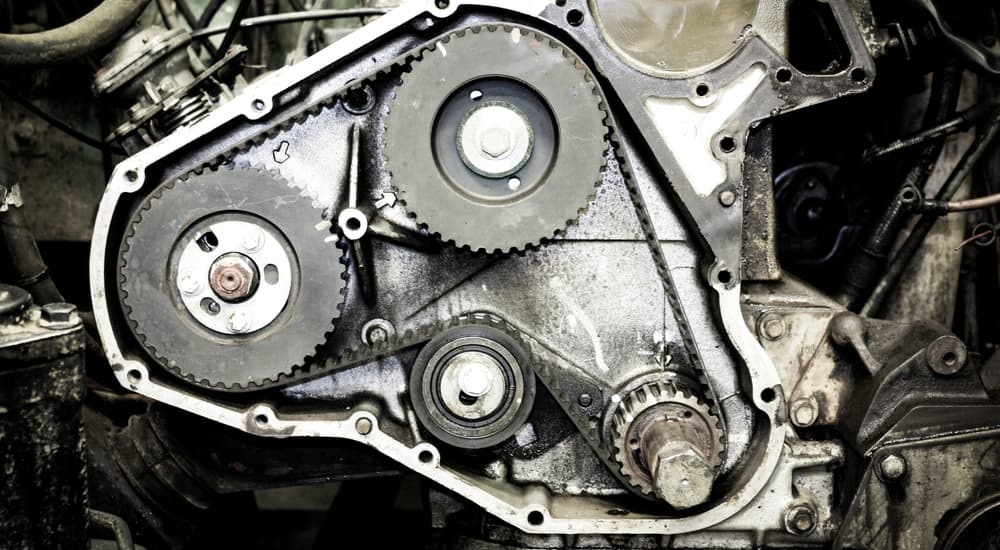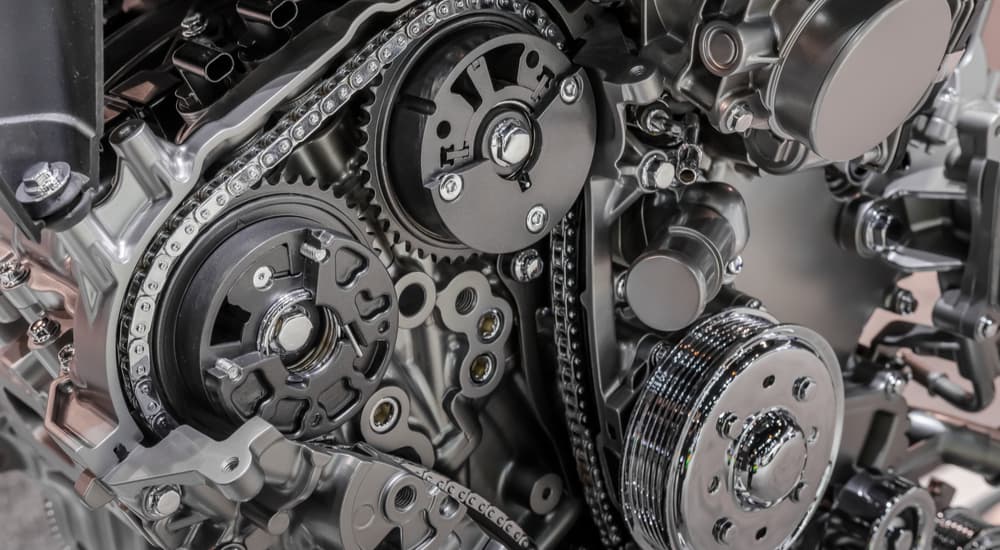While there is a lot of simple auto-maintenance that you can easily tackle by yourself at home, there are other sorts of service that require much more expertise. Even with things that you probably don’t want to mess with in your driveway, it’s still important to understand how everything works so that you’ll know what needs maintenance. For example, you might wonder about timing belts vs timing chains and which one is better as well as which you have on your vehicle – especially if you’re worried that you might need to replace it.
Let’s take a look at what these timing mechanisms are all about: how they work, what they are, the differences between them, and which is better. Unfortunately, replacing a timing belt or chain is not an easy task, and making any mistake while doing so can be potentially catastrophic for your engine. While that means you probably won’t want to do this kind of work on your own, it still helps to know what your mechanic is talking about when they mention either of these.

What is a Timing Belt or Timing Chain?
To really understand what a timing belt or chain does, we’re going to need to get into the heart of how the engine in your vehicle works. It all comes down to the cylinders in your engine. Depending on your engine’s design, you’ll have a number of different cylinders – probably somewhere between four and eight. Each one has a piston inside it and valves on it that can open and close. Some models have two valves per cylinder, while others have four – four valves gives better performance but costs more to make, so the type of vehicle you have usually dictates the number of valves.
There are two different types of valves, and you have both on each cylinder: an intake valve that opens to allow air and fuel to enter the cylinder and an exhaust valve that opens to allow exhaust gases to leave the cylinder. The basic function of an engine is called a “four-stroke cycle” that consists of four steps:
- Intake – The intake valve opens to let an air-fuel mixture into the combustion chamber
- Compression – The piston compresses this mixture within the chamber
- Power – A spark plug ignites this mixture to create an explosion, pushing the piston
- Exhaust – The exhaust valve opens to let the exhaust gases out of the chamber
In the first step, the intake valves are open and the exhaust valves are closed. In the second and third parts of the cycle, all valves are closed. In the fourth step, the intake valves stay closed while the exhaust valves open. This process repeats thousands of times a minute while you’re driving and the third step, where the explosion pushes the piston, is what creates power for your vehicle. In order to use this power, the pistons are connected to something called a crankshaft, which uses the motion of the pistons to create rotational energy that’s sent to the wheels.
So what does all of this have to do with a timing belt or chain? Every step of this process has to be perfectly synchronized, and the best way to accomplish this is to crankshaft directly to the valve camshafts via a belt or chain. Obviously, this means that if something goes wrong with your timing belt or chain, your engine is in for a very bad day, so its important to know when it needs to be checked or replaced.
Do I Have a Timing Belt or Chain?
Great question; unfortunately, it’s not one that I can answer. Depending on a wide range of factors, the manufacturer of your vehicle decided to use either a timing belt or a chain. There’s actually a third option, too -using gears to connect the two shafts together, though belts and chains are generally more common as they are simpler, cheaper, and produce less noise.
Engines with a timing chain have the chain sealed within part of the engine itself so that the chain is properly lubricated with motor oil like other moving parts within the engine. Timing chains are made from metal, as you’d expect, which makes them very durable as long as they remain properly lubricated – so following a schedule for changing your oil is vital. A timing belt is not located within the engine and doesn’t get lubricated since it is made from durable, reinforced rubber. It’s still protected by a plastic covering, however, which means you can’t just pop the hood and take a look to see which one you have.
The best way to figure out what you’ve got with your engine is to check your owner’s manual. You might also be able to search online and figure it out, but make sure you’re very specific about the make, model, and year of your vehicle. Timing chains were popular and used almost exclusively up until the 1960s, with belts becoming more popular throughout the 1960s and through the 1990s. More recently, chains have come back into style with numerous upgrades to make them better than what we had 50 or 60 years ago.

Which One is Better?
To be honest, both timing belts and chains have their advantages and weaknesses, so there’s no clear decision on one being better than the other. They’re different, and they function equally well; it’s usually a matter of the priorities of the manufacturer. To keep things simple, here are the major pros of each option:
Timing Belt
- Typically more budget-friendly
- Generally easier to replace
- Quieter than older chains
Timing Chain
- Lasts a long time without replacement
- Requires virtually no maintenance
- Less likely to slip and lose timing
As you can see, they both work well, and it really just depends on your vehicle and the company that made it. The most important thing, however, is to make sure you have it replaced any time there’s a possible issue with it. Replacing the belt or chain isn’t easy or cheap – it can easily cost more than $1,000 – but it will save you from far more expensive repairs.
When to Have It Replaced
Since you can’t just easily look at the timing belt or chain in your vehicle, it can be tricky to figure out when you need to replace it. As long as you don’t hear or feel anything off about your engine’s performance, then you can typically follow your vehicle’s manufacturer’s recommendation on when to replace it. For a timing belt, that usually comes down to about every 60,000 miles. Timing chains tend to last well over 100,000 miles, especially if you are good about changing your oil on time.
When a timing belt or chain fails, it can cause serious damage to your vehicle. A worn belt or chain will cause your engine to be mistimed, which can hinder performance. If your belt breaks completely while you’re driving, then you can have a valve crash happen – your engine will essentially slam into itself while operating. This will cause catastrophic damage and likely require you to buy a new engine. So be sure to have your belt replaced when your mileage says it’s time, and change your oil on a proper schedule to protect a timing chain.

